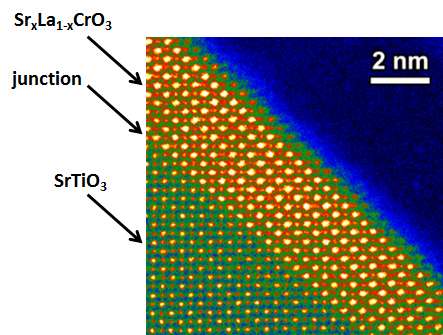Specialized crystalline films revealed to be highly conductive and transparent

The performance of solar cells, flat panel displays, and other electronics are limited by today's materials. A new material, created by modifying a transparent insulating oxide, replacing up to 25 percent of the lanthanum ions in the host material with strontium ions, offers considerable promise. The new perovskite film, with the formula SrxLa1-xCrO3, (x up to 0.25), conducts electricity more effectively than the unmodified oxide and yet retains much of the transparency to visible light exhibited by the pure material.
Materials that are both electrically conductive and optically transparent are needed for more efficient solar cells, light detectors, and several kinds of electronic devices that are by nature transparent to visible light. Of particular importance are new materials that conduct electricity by using missing electrons, otherwise known as "holes." The new perovskite film falls into this category.
The development of high-performance transparent conducting oxides (TCOs) is critical to many technologies ranging from flat panel displays to solar cells. Although electron conducting (n-type) TCOs are presently in use in many devices, their hole-conducting (p-type) counterparts have not been commercialized as candidate materials because they exhibit much lower conductivities. Scientists at Pacific Northwest National Laboratory along with collaborators at Binghamton University and the Paul Drude Institute in Berlin show that La1-xSrxCrO3 (LSCO) is a new p-type TCO with considerable potential. The researchers demonstrate that crystalline LSCO films deposited on SrTiO3(001) by molecular beam epitaxy show figures of merit which are highly competitive with best p-type TCOs reported to date, and yet are more stable and structurally compatible with the workhorse materials of oxide electronics, as seen in the image. Being structurally and chemically compatible with other perovskite oxides, perovksite LSCO offers considerable promise in the design of all-perovskite oxide electronics.
More information: "Hole-Induced Insulator-to-Metal Transition in La1-xSrxCrO3 Epitaxial Films." Physical Review B 91:155129. DOI: 10.1103/PhysRevB.91.155129
Journal information: Physical Review B
Provided by Pacific Northwest National Laboratory



















